
Google AdWords gets your business seen by customers at the exact time they are searching to buy what you sell.
It doesn’t matter if you sell a product or a service.
It doesn’t matter if you are a small or medium-sized business.
It doesn’t matter if you rely on people to visit your physical or online store.
Google AdWords can drive valuable customers to your business.
The Google Advertiser Community is a great place to see what business owners like you are doing with AdWords.
For example, a small business owner who runs a company that rents tents for events, as well as camping equipment, uses AdWords to generate sales.
A California-based dentist, who runs a Cosmetic and Family Dentistry generates new leads and increases traffic with Google AdWords.
What are the secrets of these business owners and many others, who are successful with Google AdWords?
In this article, you’ll discover 21 AdWords tips that will increase your company’s success on Google AdWords.
Let’s begin.

1. Do competitor analysis
Before you start advertising on AdWords, you should know who your competitors are.
Many business owners assume that their offline competitors are the same as their online competitors.
Wrong.
That is not always the case.
You don’t only need to know your competitors. You also have to learn from them and steal their tactics as well. Maybe, you can even use their tactics better than them.
There’s no way you can learn from your AdWords’ competitors if you don’t know who they are in the first place.
SEMrush and Spyfu are great tools that tell me about my competitors.
For example, I entered the keyword “cosmetic surgery London” into SEMrush.
Here are my top competitors for this keyword along with their ad copies.
Now I can see that my competitors are using phrases like “Be confident again,” “Book your free consultation today,” “Specialists in breast enlargement,” and “100% safe.”
Also, I can see the ad history of my competitors and the changes they’ve made in the past year.

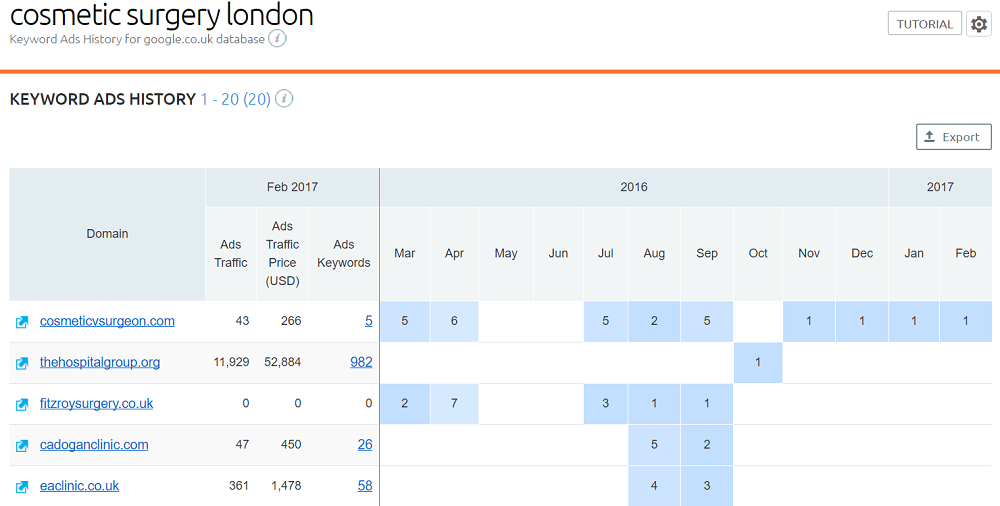
I decided to click on one of my competitors’ ad changes, and I can see what their ad copy looked like back in August 2016.
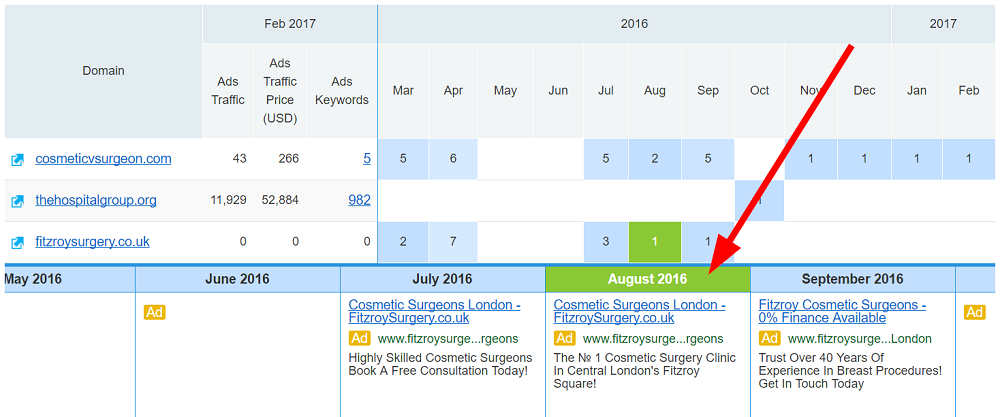
You can also type your keyword into the Google search engine and see the ads that come up.
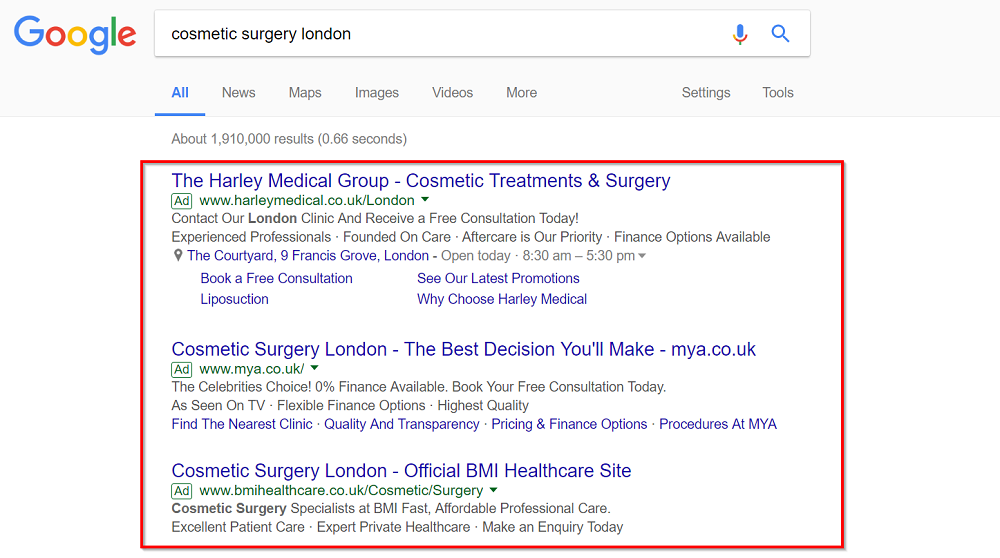
Copy the URL of one of the ads and paste it into your web browser (You want to do this to avoid getting them to pay for your clicks. You are being nice!).
Here’s what a competitor’s page looks like.
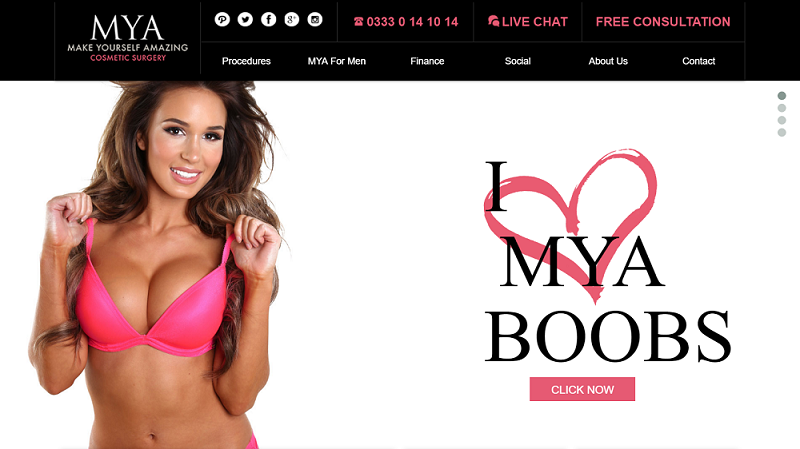
The web page looks nice.
You want to learn as much as you can from your competitors. You want to know what they are doing right and apply them to your campaign.
Many business owners ignore this important AdWords advice. That is why they struggle to generate leads and customers from their AdWords campaigns.
Your competitors are your greatest teachers. Learn from them before creating your ads.
2. Be realistic with your budget
If you’ve ever planned a holiday or shopping trip, you should know the importance of setting a limit for how much you intend to spend.
Without a plan, you could make the big mistake of mindlessly spending more than you can afford to.
The same thing is true for AdWords advertising.
You need a daily budget to avoid overspending.
But, you also have to be realistic with your budget.
How can you be realistic with your budget?
Let’s assume the average cost per click (CPC) for a chosen keyword is £2.00. And your goal is to get 20 clicks per day from that keyword. In this case, setting a daily budget of £20 won’t work.
A daily budget of £40 is okay.
Because, 20 clicks (your goal) x £2.00 (the average cost per click) = £40.
A lot of factors go into setting the perfect budget, but I want this guide to be simple.
Multiplying your number of expected clicks by the average cost per click for the keyword is a good place to start.
You can gradually increase or decrease your budget from there.
3. Focus on search ads
According to a study published in Recode, digital display ads on desktop and mobile devices, are shrinking.
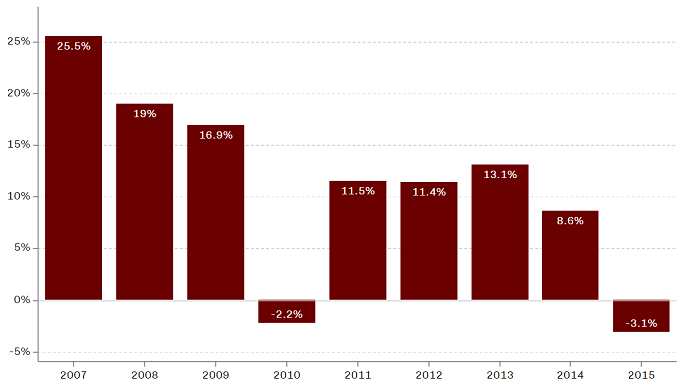
And according to the Harvard Business Review, most advertisers have come to believe that ads delivered when a customer is searching specific terms are more effective than the static banner ads that once dominated the web.
Customers should see your ads only when they are interested. AdWords search ads let you do just that.
When choosing your campaign type in Google AdWords, make sure you select “Search network only.” This ensures that your ads only show on Google search results when people use your target keywords.
4. Write out your campaign goals
You should know what you want to gain from your advertising campaign.
Is it more traffic, more calls, more form submissions, more customer engagement or brand awareness?
Writing out your campaign goal before you begin is very important.
You should keep this goal in mind when you are creating your landing pages (where you want to direct visitors from ads), ad copies, and when choosing keywords to bid on.
Everything you do should align with your campaign goal.
5. Test call-only ads
Google AdWords’ call-only ads are dedicated to the mobile audience and focus on phone calls as a conversion point.
These ads will only display on devices where a phone call can be made directly from the search results.
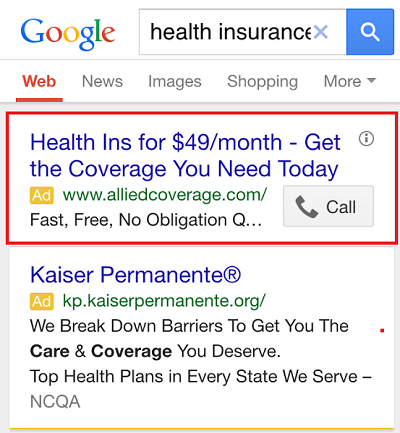
Choose call-only for some of your ads in Google AdWords.
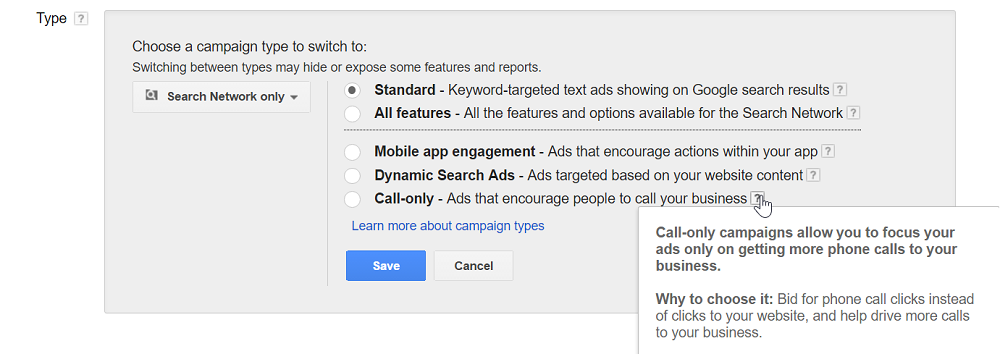
Note that call-only ads won’t drive traffic to your website. They only generate phone calls.
Google will supply you a verification URL to confirm the phone number you use in the ad.
Call-only ads can help boost the calls your business receives per day if that is your campaign goal.
6. Structure your advertising campaign
AdWords lets you create different ad campaigns as often as you like.
If your company serves more than one location, you should create separate ad campaigns for each location.
If your company sells different products or services, you should create separate ad campaigns for each one.

Create different campaigns for different goals.
A well-organised account will help you create effective campaigns that help you track and realise your goals sooner.
7. Target people who are physically located in the vicinity of your business
Google AdWords location targeting lets your ads reach people based on where they are located.
If you’re running a local-based business, targeting people who are closer to your company’s office can make your ads more effective.
There are 2 ways to do this.
First, you can target people based on where they are located. Google AdWords lets you set how many miles from your location you want to target. You can also just type the city or state name.
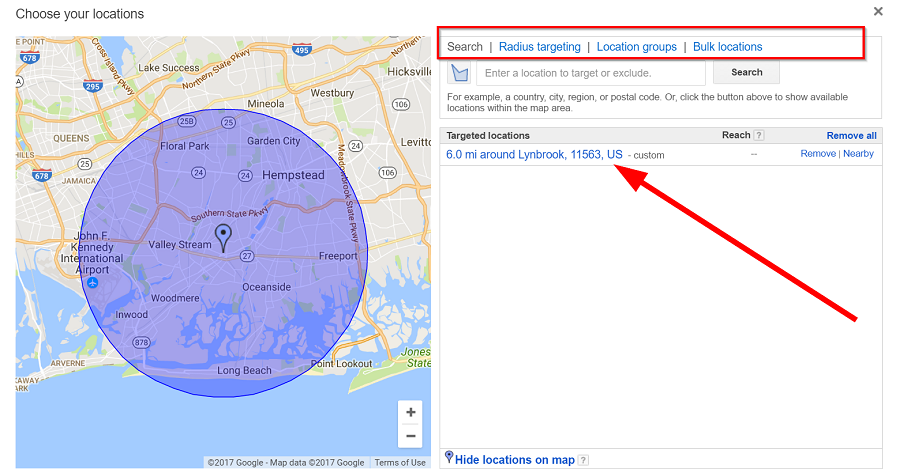
Let’s assume you operate a taxi company and target the keyword “taxi company.”
So, when people type the keyword “taxi company’ around your location, your ad is likely to appear.
Second, you can target people based on the location expressed in the keyword.
For example, you can target the keyword “best hotels in London.”
Anyone who types this keyword doesn’t necessarily have to be in London.
They can be in Manchester, Cardiff, Edinburgh, or Belfast, and could be thinking of making a trip to London. So, they want the best hotel to stay in London.
The location targeting option you choose between these two will depend on the kind of business you operate.
If you have a clothing store in London, it’s best you target people who are physically located in London. That would be the first location targeting option for you.

It’s rare for someone who lives far away from your store to buy from you.
8. Use the Ad Schedule feature
Ad Schedule simply lets you preset when you want your ads to show.
There are many reasons why you may want to use this AdWords feature.
If there are certain times when your business is closed, you may want to avoid running ads during these times.
You may also decide to avoid running ads when your business place is packed. It makes no sense to run ads and turn customers away.
If your ideal clients are likely to call during business hours, then it’s wise to turn off your ads when it’s not business hours.
Another strong reason could be because your data says that you get more clients when its afternoon. Then you can decide to let your ads run only in afternoons.
If you are already running AdWords ads, you can check to see when your ads receive the most impressions and clicks.
For example, this AdWords account receives the most ad impressions and clicks starting from 8:00 a.m. – 19:00 p.m. 10:00 a.m. – 15:00 p.m. are usually the busiest times.
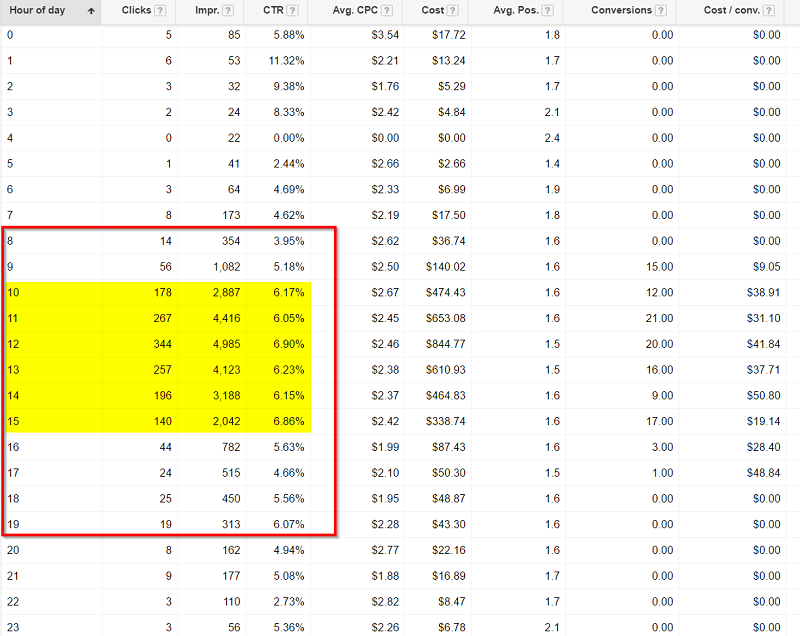
Want to know when your ads receive the most impressions and clicks?
While inside your AdWords dashboard, click on “Campaigns” and “Dimensions.”
Then view “Time” and select “Hour of day” to get the data.

Click “Settings” and “Ad Schedule” to start scheduling your ads to run at the best times for your business.
9. Increase your bid on mobile searches
Mobile searches now exceed desktop searches.
It’s now impossible to go outdoors without seeing people’s heads buried in their mobile devices.
At the gym, store, restaurant, and even in our cars. We are addicted to smartphones.
Mobile search has become the biggest area of profitability for Google.
According to Google, 76% of people who conduct a local search on their smartphone visit a business within 24 hours and 28% of those searches result in a purchase.
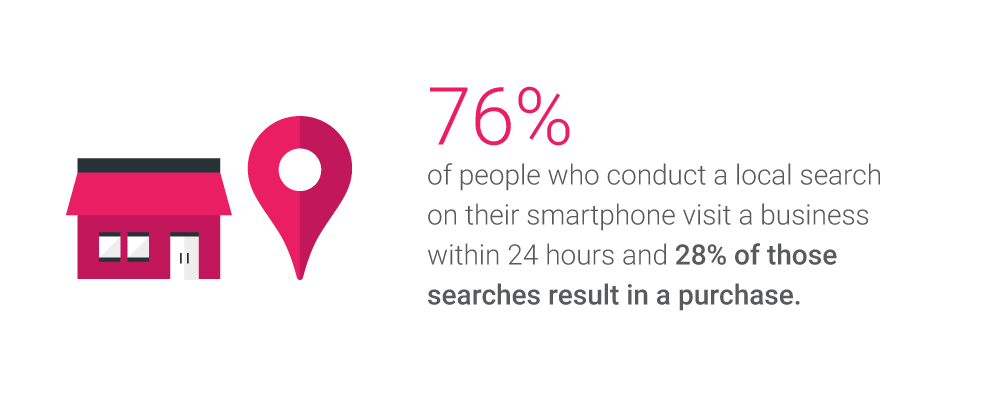
You should take mobile search seriously.
Be willing to increase your keyword bids for mobile searches because they lead to more sales.
10. Track the number of calls from your ads
Besides using call-only ads, you should also be tracking calls that come from various ad campaigns and ad copies. You should track calls if they are important to your business.
Google offers conversion tracking that helps you analyse your ad copies, ad groups, and campaigns that drive the most valuable phone calls to your business.
In fact, this feature allows you to track calls to a phone number on your website.
11. Track enquiry form submissions
Enquiry forms can be a powerful tool for collecting leads on your website.
Google AdWords can help you track which form submissions are coming from your AdWords ads, ad groups, and campaigns.
This is possible by using Google Tag Manager.
Google has a simple guide on how to use GTM here.

12. Understand Quality Score
If you want to master AdWords, you need a solid understanding of Quality Score.
Google’s Quality Score has a huge influence on how your ads perform and how much you pay per click.
Your quality score depends on a lot of factors like:
- The click-through rate of your ads.
- The relevance of each keyword to its ad group.
- The quality and relevance of your landing page to the keyword.
- The relevance of your ad text.
- And the performance of your account based on its history.
To be honest, nobody outside Google knows how much each factor weighs on the Quality Score algorithm. But we do know that the click-through rates of your ads are important.
If your ads are getting clicked, Google will show more of your ads because they want high-performing ads their users love. That makes them more money and lowers the cost you pay per click.
To improve your Quality Score, you need to create enticing ads backed by strong call-to-actions people can’t wait to click.
In the remaining AdWords tips, you’ll learn how to improve your Quality Score and get cheap clicks from Google.
13. Create landing pages that match your ads
Have you ever seen an ad that talks about something, only to click on it and find the page almost irrelevant?
For example, you saw an ad that promised to teach you how to get out of debt.
When you clicked on it, you quickly realise that the page is about how to make money through digital marketing.
That’s dubious. The experience can be very awkward.
Here’s a perfect example of good practice:
I searched for cheap hotels in London and saw this Booking.com advert that promised cheap hotel with no reservation cost, 24/7 customer service, free cancellation, and secure booking. That sounds like everything I wanted.
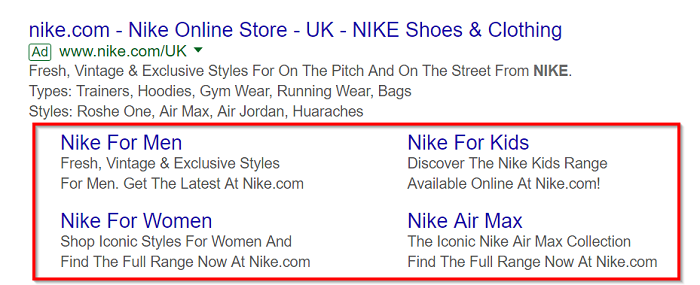
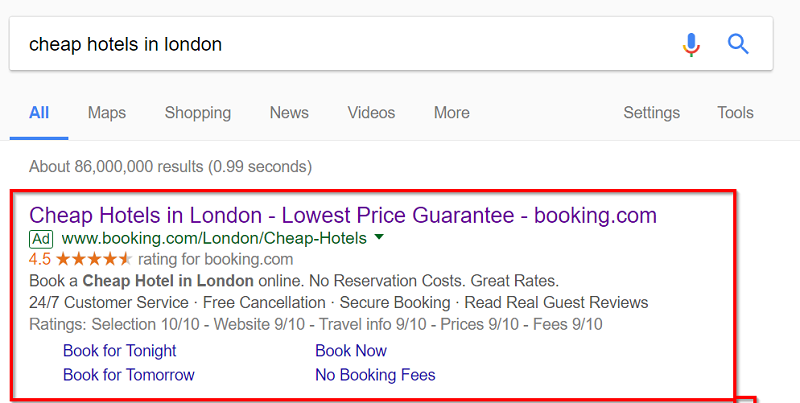
So, I clicked on the ad.
I was taken to the page in the below screenshot. I am asked to enter my check-in and check-out dates to get prices.
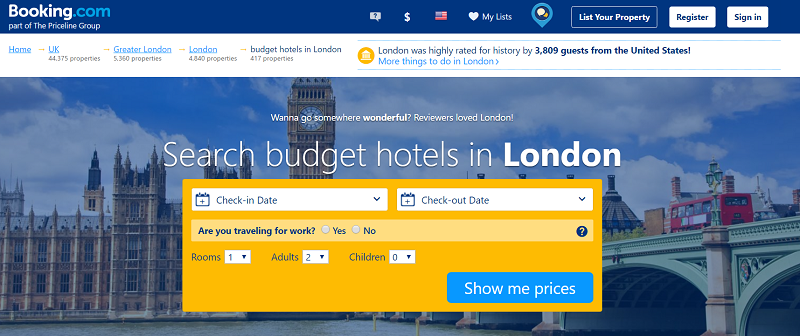
I found some nice hotels with discounts if I book right now.
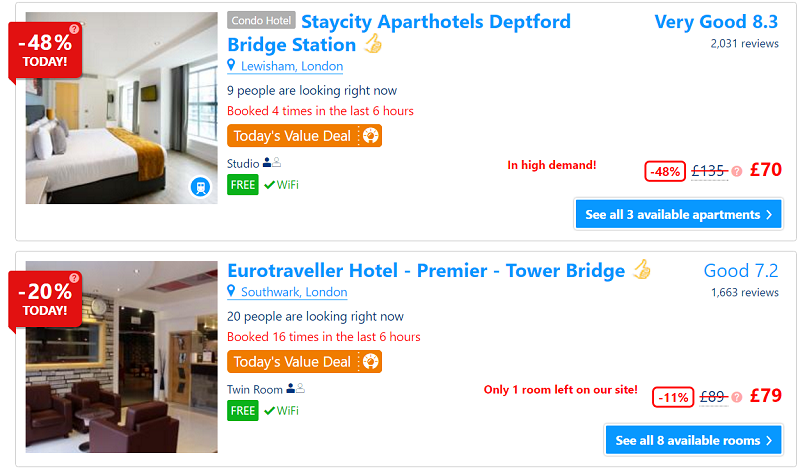
Noticed how the information on the landing page matched my intent?
Your ads’ landing pages should do the same.
14. Write a compelling ad copy
For your ad copy to be effective, you need to stress the benefits of your product or service.
Pay attention to the way Shopify emphasised the benefits of their product in their ad that displays for the keyword “create a store.”
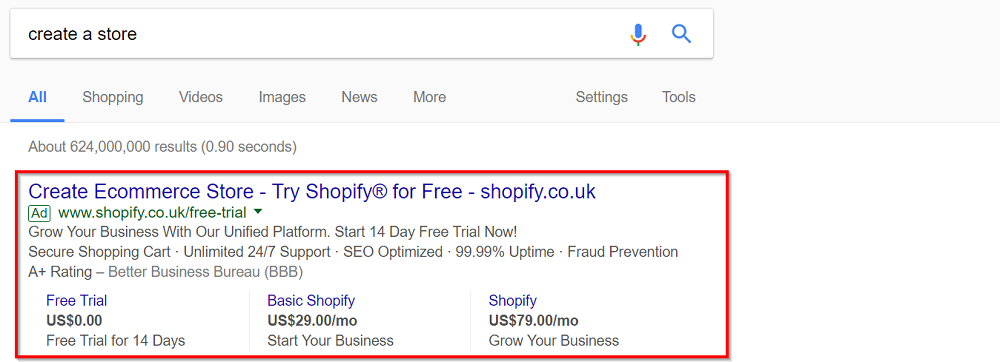
You’ll agree with me that this ad appeals to almost everyone who wants to create an online store.
The ad is so compelling that you can’t ignore it.
Think of all the benefits a customer will get from buying from you.
You may not be able to include all these benefits in one ad, but include some of them.
15. Create as many ads as possible
Why should you create many ads?
Isn’t that silly?
No, it’s not.
And no, I don’t mean you should spend all your marketing budget on AdWords.
When you create a lot of ads, you know what’s working and what’s not.
The more ads you create, the more you know about your target customers.
Target keywords that are relevant to your business. Create as many ad copies as possible.
Then be ruthless to any ad copy that brings little clicks and conversions.
16. Don’t change your best performing ads
Above, I advised you to create many ads.
Keep in mind that I didn’t say you should change or delete your best performing ads.
If a particular ad is generating clicks and conversions above the average, keep it. But show no pity to others.
The logic here is that when you create a lot of ads, delete the ads that underperform and leave the best-performing ads, you’ll end up with a lot of great ads. This improves your overall Quality Score.
17. Use callout extensions
You can use AdWords callout extensions to highlight some special offers in your ads.
For example, you can use phrases like “Free Shipping,” “Fast Delivery,” “No Hidden Costs.”
Phrases like these increase your click-through rate, which is a good thing for your Quality Score.

18. Use call extensions
According to the AdWords team, call extensions can increase your click-through rate by 4 – 5%.
Call extensions add your business phone number to your ads.

Keep in mind that call-only ads are different from call extensions.
19. Use Review Extensions
Showing reviews on ads can boost your click-through rate.
88% of consumers trust online reviews as much as personal recommendations.
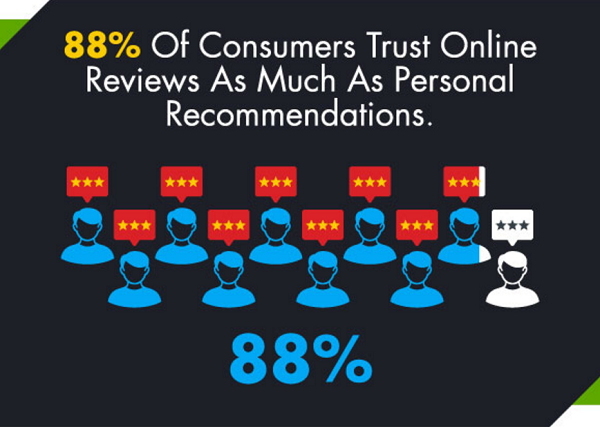
The presence of reviews alone can help boost trust in your business when people see your ads.

20. Use sitelink extensions
AdWords’ sitelink extensions allow you to add more links to your ads.
You may want to add links to key pages on your website that are related to the keyword. Or it could be links to related pages consumers may be interested in.
For example, Nike is using site links for ads targeting their brand name.

21. Track, measure and improve your click-through rate
The AdWords features mentioned in this article will help you increase your click-through rate.
But not every one of them is good for your business.
Some will improve your click-through rate and Quality Score.
Some may harm your click-through rate rather than help it.
Others may have zero impact on your ads.
There’s no way to know these except you make a diligent effort to track, measure and improve your ads.
Don’t just set up your ads and leave them.
Invest, at least, 20 minutes each week to analyse and improve your ads.
With these 21 AdWords tips, you’ll increase the number of leads and sales you get from Google AdWords.
Discover
The 12 Marketing Secrets of Fast-Growth Companies
Find out what they do to achieve outrageous business success

Get your free copy

 By
By 
First, you’ll first need to identify which pages on your site are causing self-referrals. Go to Acquisition > All Traffic in Google Analytics, then click the “Referrals” source. Locate your domain name under “Source” and click on it.